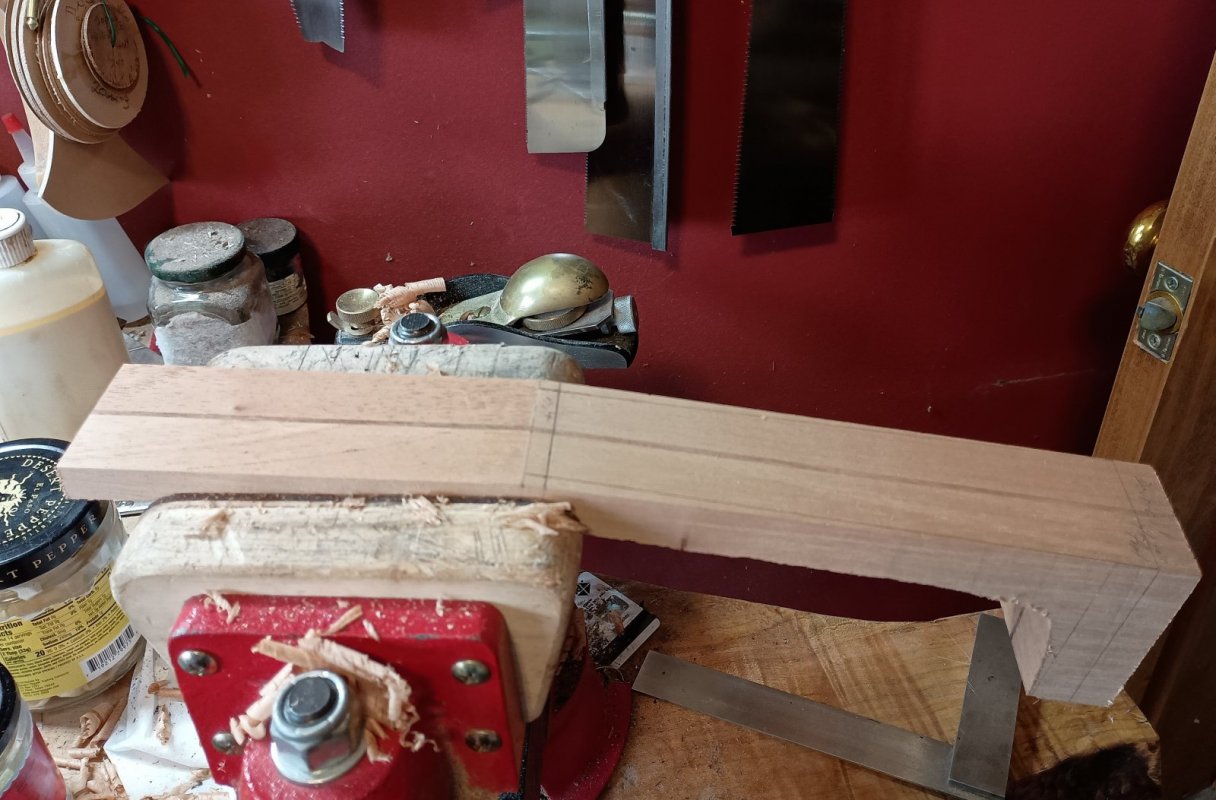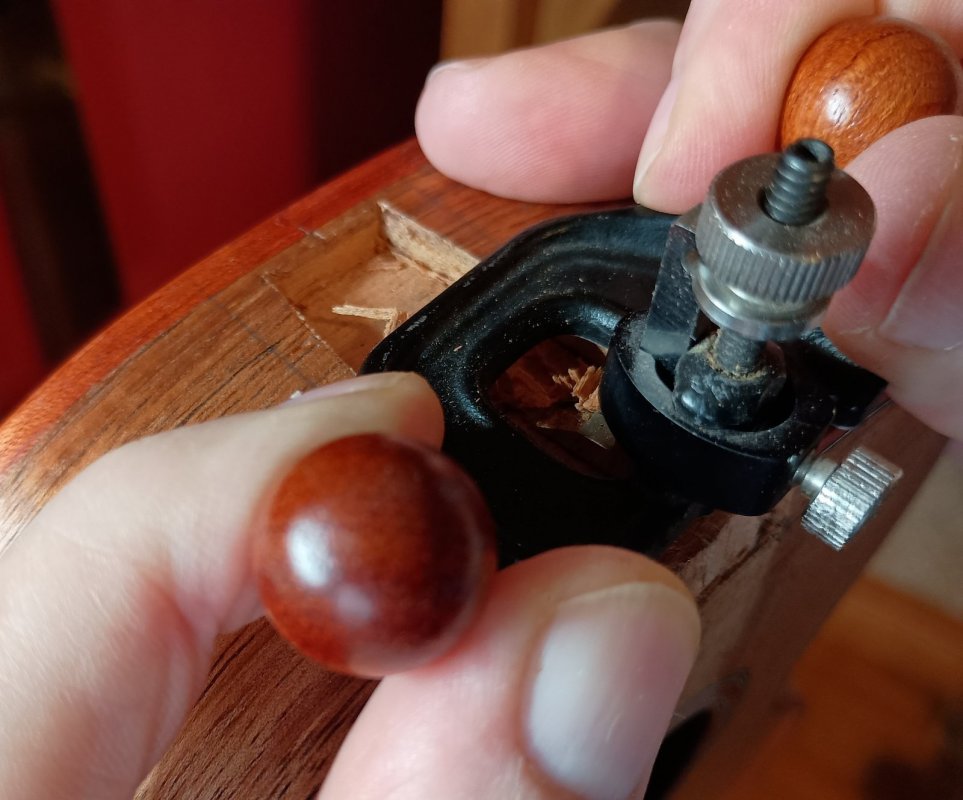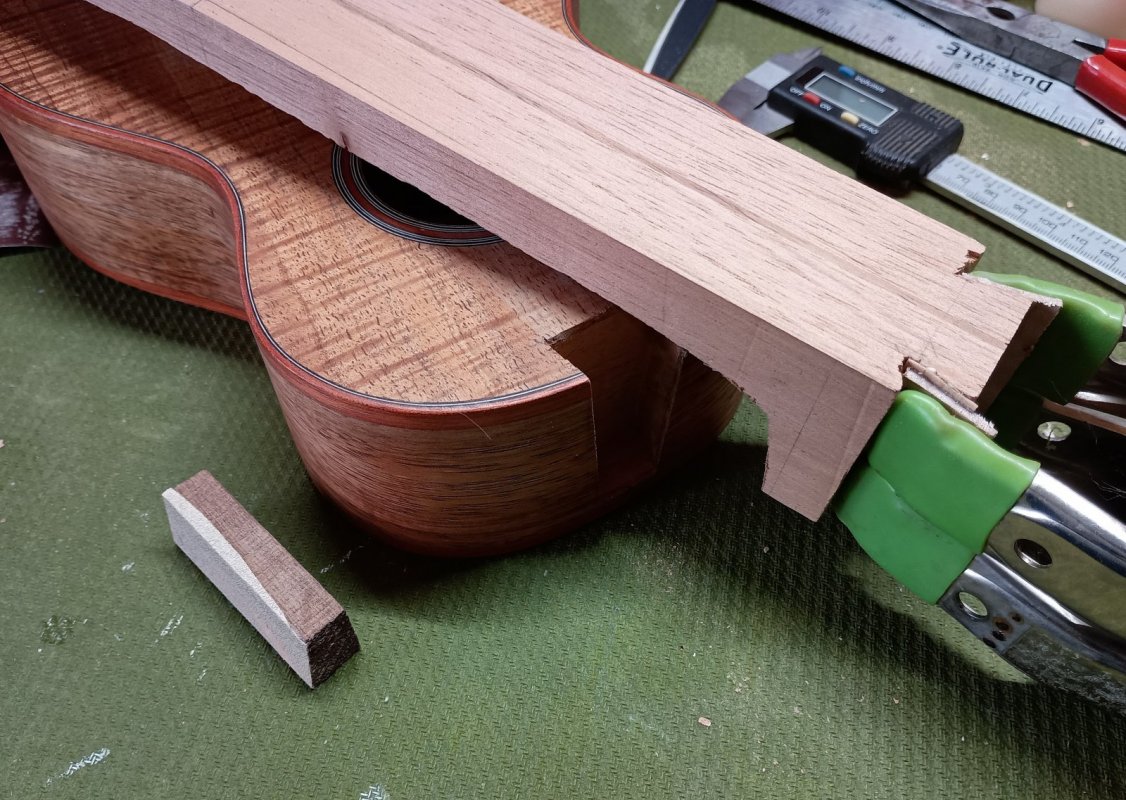AcornHouse
Venerated Member
For some reason I'm starting to get ads for Hawaiian shirts in my Instagram feed.
I've no idea why.
I've no idea why.


Definitely this is what separates the men from the boys, Chris.Two saw cuts, then start getting the waste out with router plane and paring chisel. I also called my smallest dozuki to help continue the saw cut as I got deeper. The original cuts have to be at an angle to not go into the binding at the bottom. The small saw is able to grab some wood at its tip better.


I was just wondering about your thinking process as to getting the wedge's pressure points to be and stay, exactly, where you want them as the glue dries? And what kind of glue you use? Love the finger grips.One of the disadvantages of building different types of instruments (because of the commission du jour) is that they frequently have different types of neck joints. Which means you don't have a tried and tested jig* all ready to go and you haven't practiced a particular type of joint in years. Say, a dovetail joint cut by hand.
So you end up needing to add shims during the fitting process, just like it were a neck reset, because you've bottomed out and still have a slight amount of off axis at the bottom.
*I do have a Hi-Tech sanding jig in walnut to get the angle the same.

It's critical to use cauls when gluing veneer. Here, I have thicker strips of maple keeping the veneer flat and in good contact. Just regular Titebond 1 here.I was just wondering about your thinking process as to getting the wedge's pressure points to be and stay, exactly, where you want them as the glue dries? And what kind of glue you use? Love the finger grips.
Then, again, my mind and eyes may have my brain focusing on thoughts, totally, unrelated to your intent.
That's about the prettiest uke I've ever seen.
At the moment, no. But that may change.That'll look fabulous, Chris. Are you planning any cool inlaying for this one?